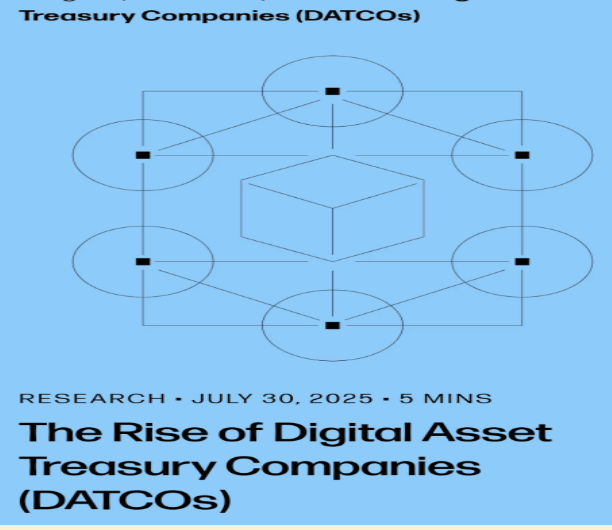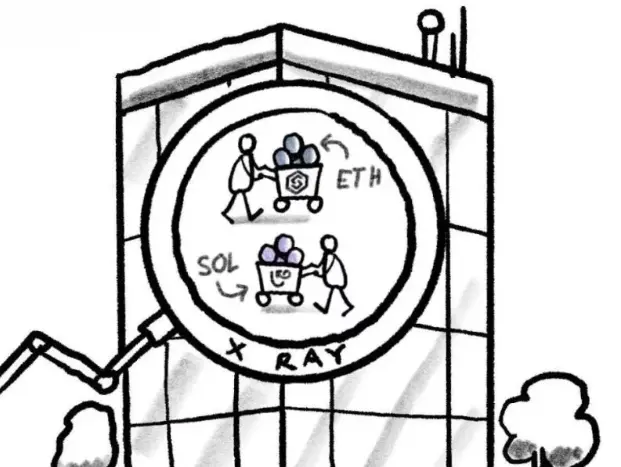Corporate Crypto Treasuries Grow as Firms Amass $100B in Digital Assets
A new wave of corporate cryptocurrency treasuries is reshaping the financial landscape, as traditional firms increasingly integrate digital assets into their balance sheets.
A new wave of corporate cryptocurrency treasuries is reshaping the financial landscape, as traditional firms increasingly integrate digital assets into their balance sheets.
According to a recent report by Galaxy Research, companies like Strategy, Metaplanet, and SharpLink have collectively acquired more than $100 billion in crypto holdings — signaling deepening institutional interest in the sector.
Bitcoin remains the dominant asset, with treasury firms holding over 791,000 BTC, valued at approximately $93 billion. This represents nearly 4% of the total Bitcoin supply in circulation. Meanwhile, Ether (ETH) is gaining momentum as a treasury asset, with companies owning around 1.3 million ETH — worth over $4 billion — or 1.09% of the total supply.
 Source:
Galaxy Research
Source:
Galaxy Research
Galaxy’s report highlights a notable shift in how corporations are viewing Ether, particularly as it becomes a growing source of liquidity. Ether-based spot ETFs in the U.S. have posted 19 consecutive days of net inflows, reaching $5.3 billion since July 3, according to data from Farside Investors.
Financial giant Standard Chartered believes this trend is only just beginning. In a recent report , the bank projected Ether could surpass the $4,000 mark by year-end and predicted corporate treasuries might eventually hold 10% of all ETH — a tenfold increase from current levels. The bank emphasized Ether’s appeal lies in its regulatory flexibility and staking capabilities, making it more dynamic than Bitcoin in some strategic contexts.
Additionally, in July, Standard Chartered launched a fully integrated digital asset trading service, becoming the first global systemically important bank to offer spot crypto trading to institutional clients through a regulated framework. The new service, rolled out via the bank’s UK branch, enables trading of Bitcoin (XBT/USD) and Ether (XET/USD), with non-deliverable forwards (NDFs) set to follow.
The growing appetite for Ether among corporate treasuries suggests a broader institutional pivot — one that sees Ethereum not just as a speculative asset, but as a foundational piece of modern financial infrastructure.
Disclaimer: The content of this article solely reflects the author's opinion and does not represent the platform in any capacity. This article is not intended to serve as a reference for making investment decisions.
You may also like
Vitalik's Long Article: The Exit Game of EVM Validiums and the Return of Plasma
Plasma allows us to completely bypass the data availability issue, significantly reducing transaction fees.

Market value evaporates by 60 billions! Faith shaken, institutions on the sidelines—has bitcoin’s “post-halving crash” curse come true?
A major reason for the recent plunge is market concerns over a repeat of the "halving cycle"—that is, after a supply reduction triggers a boom, a deep correction inevitably follows. Panic selling by investors, combined with a stagnation of institutional funds and macroeconomic headwinds, have collectively led to a collapse in market confidence.

SharpLink and Upexi: Each Has Its Own Strengths and Weaknesses in DAT
For this model to be sustainable, one of the following two scenarios must occur: either staking truly becomes a corporate cash engine, continuously providing funds for digital asset purchases; or companies must incorporate the planned sale of digital assets into their digital asset strategies to achieve systematic profits.

80% is hype? Six major red lines reveal the true intentions of Stable
It appears to be an infrastructure upgrade, but in essence, it is an early, insider-friendly issuance.

